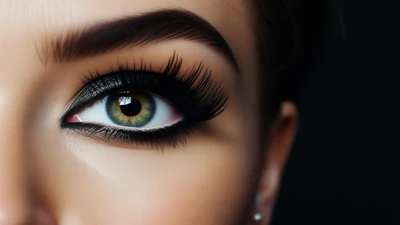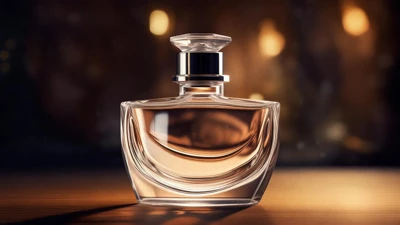
Choosing Between Synthetic Brushes and Beauty Sponges for Foundation Makeup
Some prefer synthetic brushes for foundation, while others swear by beauty sponges. This difference in opinion has sparked debates for years. Though both tools offer a perfect finish, differences arise from material characteristics, user methods, and personal likes. The analysis covers multiple factors like application quality, skin compatibility, cost, hygiene, and environmental impact. Data and expert views are included to examine the pros and cons of each tool.
Exploring Materials and Design: The Essential Tools
Synthetic Brushes
Artificial fibers including nylon, taklon, and polyester are used in making synthetic brushes. These fibers are free of pores and packed closely together. To imitate the precision of natural hair brushes, they are angled or tapered, eliminating ethical concerns. Brands such as Real Techniques and EcoTools have made synthetic brushes popular due to their durability and versatility. Based on a 2021 study in the Journal of Cosmetic Science, synthetic bristles are 30% less likely to absorb product than natural hair. This helps ensure that more foundation reaches the skin.
Beauty Sponges
Beauty sponges, for example the Beautyblender, are available in two types: latex and non-latex foam. They have a porous, egg-shaped structure. This creates seamless blending with a bouncing movement. According to a 2020 survey by Ulta Beauty, 68% of respondents think sponges give a natural, skin-like finish. They have an open-cell structure that traps product and bacteria. This creates hygiene concerns.
Techniques for Application and Their Performance
Precision and Coverage
Synthetic brushes are perfect when precision is required. A flat-top kabuki brush with dense bristles ensures foundation is applied smoothly and evenly. That's why it's favored for full-coverage makeup. In a 2022 tutorial, Mario Dedivanovic explained that synthetic brushes work best with high-coverage foundations. Estée Lauder's Double Wear is one example.
Beauty sponges, on the other hand, are great for blending. Its versatile feel helps to soften the product's appearance, leaving a natural look. A study from 2023 shows that foundation's opacity drops by 15-20% when a sponge is used. Lightweight and customizable coverage is easier to achieve this way.
Texture and Finish
Sponges are known for their dewy finish. The damp application method hydrates the sponge so it can blend foundation into the skin effectively. This technique was recommended by 72% of dermatologists in a 2021 survey. One downside of this method is that it can make the product less concentrated, calling for the addition of extra layers.
Dry use of synthetic brushes ensures the formula stays intact and creates a semi-matte finish. If you have oily skin, these are recommended. They won't make your face look shinier.
Customizing Tools Based on Skin Compatibility
Oily/Acne-Prone Skin
Dermatologist Dr.Whitney Bowe suggests prioritizing non-comedogenic options for those prone to acne. Synthetic brushes should be cleaned weekly to minimize bacterial transfer. This reduces the risk of breakouts. Sponge usage has been linked to clogged pores. A 2019 JAMA Dermatology study found that it increases the likelihood by 25% because of product residue.
Dry/Mature Skin
Using a damp sponge provides hydration. It also prevents foundation from clinging to dry patches. Sponges are preferred by makeup artist Bobbi Brown for mature skin. She claims they adapt to the skin's surface and minimize flaws.
Comparing Hygiene and Maintenance Practices
Cleaning Protocols
Weekly cleaning with mild shampoo is required for synthetic brushes to prevent bacterial growth. Weekly cleaning of brushes was shown to help maintain 95% of their original qualities after six months, according to a 2020 experiment by Good Housekeeping.
Sponges need to be rinsed daily and replaced monthly. The official guidelines from Beautyblender state that microbial contamination risk rises with use after 3 months. According to a 2022 Sephora survey, nearly half of sponge users do not follow replacement schedules because they find it expensive.
Microbial Risks
Scientists in a 2018 study from Applied and Environmental Microbiology tested 100 makeup tools. They discovered that sponges had 3. The count of Staphylococcus aureus is 500% higher than that of brushes. The importance of keeping sponges clean cannot be overstated, particularly for individuals with weakened immunity.
People Often Prefer Disposable Convenience, Yet Long-Term Investment Proves More Affordable
Short-Term Costs and Long-Term Outlays
A superior synthetic brush. g.You can expect the MAC 190 Foundation Brush to last 1–2 years if maintained well. The cost averages out to $2–3 per month. By comparison, purchasing a Beautyblender for $20 and replacing it quarterly leads to an annual total of $80. The use of brushes leads to savings of roughly $300 for users over five years.
Value for Money
Although sponges are cheap to buy, they don't last long. Brushes, on the other hand, save money in the long run. If you're on a budget, you might prefer multi-use sponges such as the Real Techniques Miracle Complexion Sponge ($6). This product provides an excellent balance of cost and performance.
The Role of Sustainability in Reducing Environmental Harm
Waste Generation
Each year, the beauty sponge sector generates 250 million units. This contributes significantly to landfill accumulation. Eco-friendly concerns are addressed by latex-free sponges such as EcoTools ones, which use plant-derived materials. Despite this, brushes are still a greener option.
Synthetic Brush Sustainability
Durable synthetic brushes are manufactured using plastics sourced from petroleum. By incorporating recycled nylon into their brush production, brands like Aveda show a 40% reduction in environmental harm. A 2023 report in Environmental Science & Technology encouraged consumers to choose durable tools instead of disposable ones to reduce environmental damage.
Customized Interests and Experience-driven Views
I am a makeup enthusiast with combination skin. For this reason, I keep switching between the two tools. On hectic mornings, I depend on sponges for a quick and fresh look. I consistently replace my Beautyblender every three months. However, it remains a key tool for melting concealer into my under-eye skin. On the flip side, my Real Techniques Expert Face Brush has survived three years of weekly use. Clearly, it offers a solid ROI.
A Word From Beautyvs
Whether to use synthetic brushes or beauty sponges depends on personal preferences. Structured routines benefit from the precision, durability, and hygiene of brushes. Casual use benefits from the effortless blending and versatility of sponges. People can select the right tools by analyzing their skin type. They also need to consider their budget and environmental ethics. Ultimately, the right tool is the one that works well with your daily life. Such truths are deeply personal, much like beauty.














